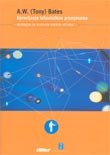
Bates, A.W. (2004). Upravljanje tehnološkim promjenama: Strategije za voditelje visokih učilišta. CARNet, Zagreb. (181 pages)
Quite a detailed overview and analysis of e-education managing strategies on a higher education institutional level. It requires the understating of the context in which the e-education products and services are being developed. Useful for e-education managers and authors of online courses.
Grade: 8/10.
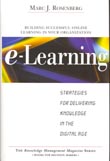
Rosenberg , M.J. (2001): E-learning: Strategies for delivering knowledge in the digital age. McGraw-Hill, New York. (343 pages)
Detailed analysis of the roles and possibilities of application of e-education in business organisations. It contains examples from practice. Very useful for management of continuous education in corporations.
Grade: 7/10.
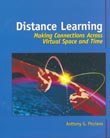
Picciano, A.G. (2001): Distance Learning: Making Connections Across Virtual Space and Time, Prentice Hall, Upper Saddle River, New Yersey. (253 stranice)
Pregled područja obrazovanja na daljinu imajući u vidu različite tehnologije i medije, obrazovne ustanove, nastavnike i polaznike. Lako razumljiv prikaz šireg konteksta obrazovanja na daljinu koji omogućuje pogled na e-obrazovanje u perspektivi drugih analognih oblika obrazovanja. Dobro za opće informiranje o obrazovanju na daljinu, a korisno menadžerima u e-obrazovanju.
Ocjena: 6/10.

Melton, R.F. (2002): Planning and developing open and distance learning: A quality assurance approach. RoutledgeFalmer, London. (223 pages)
Detailed overview of different elements which contribute to the quality of distance education courses. Very applicable to academic institutions, distance education managers and authors of e-learning courses.
Grade: 8/10.
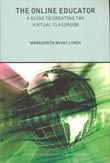
McVay Lynch, M. (2002): The Online Educator: A Guide to Creating the Virtual Classroom, RoutledgeFalmer, London. (170 pages)
Overview of different technologies, communication forms, techniques, strategies and pedagogical principles in e-education. Concise reminder about many important factors in course design. Necessary for course authors and instructors.
Grade: 9/10.

Salmon, G. (2000): E-Moderating: The Key to Teaching and Learning Online, Kogan Page, London. (180 pages)
Often quoted work on moderation of online communication i.e. the interaction related to tasks and having dialogues and discussions with the participants of e-education. Includes a renowned theoretical model of e-moderating, as well as applications of numerous situations with specific messages that a moderator and participants exchange. Very useful for competency development in moderation of online interaction.
Grade: 8/10.

Palloff, R.M., Pratt, K. (1999): Building learning communities in cyberspace: Effective strategies for the online classroom. Jossey-Bass, San Francisco. (206 pages)
Collection of numerous tips for a more successful organisation and management of e-education groups, as well as for a more efficient communication in individual and group interaction with the participants. Useful for online instructors, mentors and moderators.
Grade: 8/10.
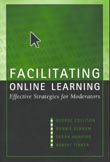
Collison, G., Elbaum, B., Haavind, S., Tinker, R. (2000). Facilitating online learning: Effective strategies for moderators. Atwood Publishing, Madison. (216 pages)
Overview of roles (moderator, stimulator), dialogic techniques and strategies in interaction with the participants of e-education. Particularly useful for better understanding and management of online dialogues.
Grade: 7/10.
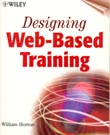
Horton, W. (2000): Designing Web-based training: How to teach anyone anything anytime anywhere. Wiley, New York. (607 pages)
A lot of useful advice and examples with screenshots from many courses. Simple and clear language, as well as quite a significant manual, leading you step by step to successful designing and delivery of online courses. Very useful for authors and designers of online courses.
Grade: 9/10.
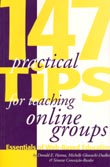
Hanna, D.E., Glowacki-Dudka, M., Conceição-Runlee, S. (2000). 147 practical tips for teaching online groups: Essentials of Web-based education. Atwood Publishing, Madison. (74 pages)
A collection of advice on online teaching for those who already have some knowledge in the field. It can serve as a reminder for course designers and instructors.
Grade: 4/10.
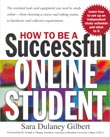
Gilbert , S.D. (2001). How to be a successful online student. McGraw-Hill, New York. (267 pages)
An overview of many factors influencing the success of e-education participants, from self-assessment of personal needs and possibilities, to application for online courses, fulfilling the duties and successful participation in online interaction with other participants. Intended for e-learning students.
Grade : 5/10.
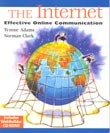
Adams, T., Clark, N. (2001). The Internet: Effective online communication. Harcourt, Fort Worth. (368 pages)
Basics of communication technologies and Internet services, as well as advice for a more successful personal, group and public communication through e-mail, newsgroups, discussion forums, electronic conferences, web pages, multimedia content on the web etc. Useful for authors, instructors and moderators of online content, as well as e-education participants with insufficient knowledge of basics of Internet communication.
Grade : 7/10.

